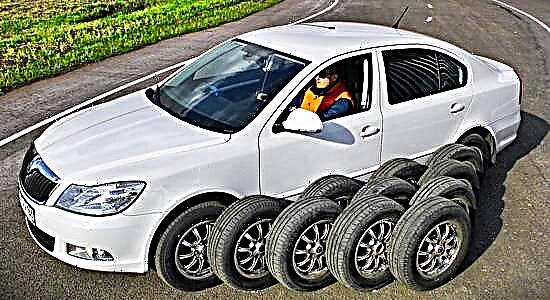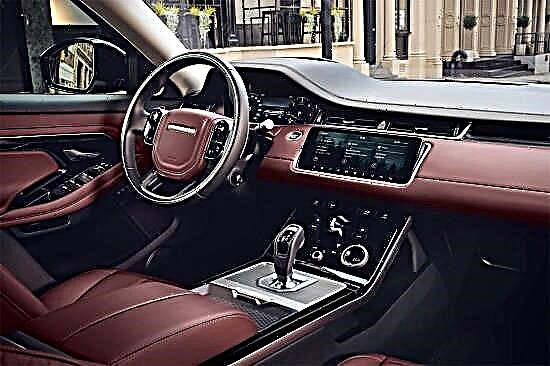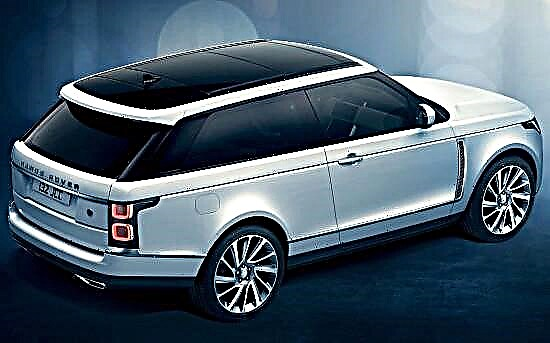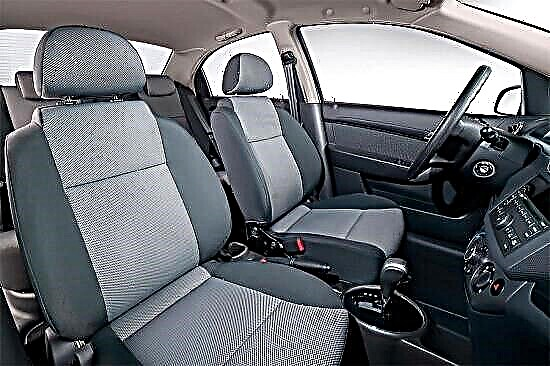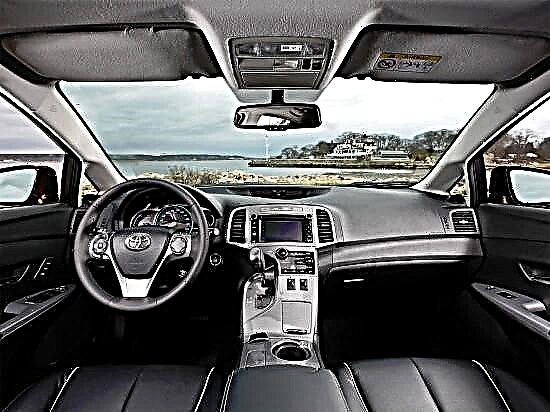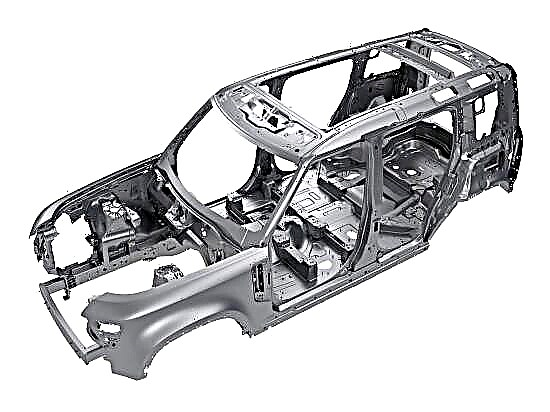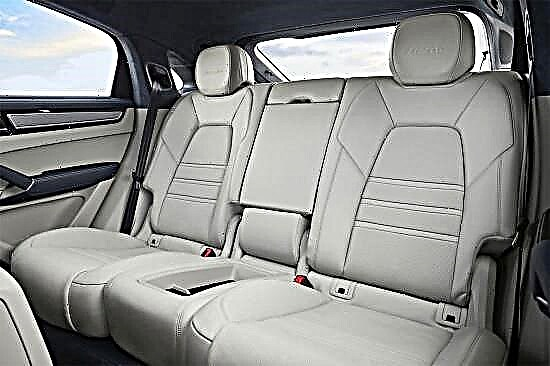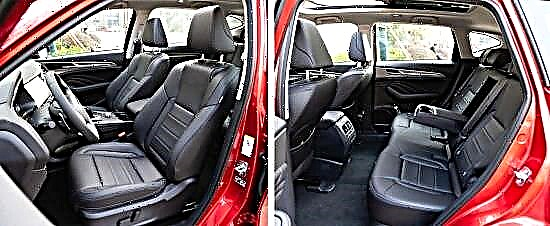The Haval F7 is a front- or all-wheel-drive mid-size SUV heading the youth lineup of the Chinese automaker, which combines expressive design, performance technology and a rich level of equipment ... It is addressed to the energetic and advanced drivers aged 20 to 35 years old, for whom it is important not only how the car drives, but also how it looks ...
The premiere of the Haval F7 took place in late August 2018 at the international motor show in Moscow, but a few days before this event, it was officially presented in its homeland, in the Celestial Empire ... and at the very beginning of summer 2019, its sales on the Russian market started.
The SUV based on the HB-02 concept car (which debuted back in 2016 at a bride show in Beijing) not only put on an "attractive shell", but also received modern gasoline engines and a robotic gearbox developed by Great Wall ( it is she who is the "parent company" of Haval).

Outside, the Haval F7 fully complies with the spirit of the times and attracts the eye with attractive, catchy and balanced outlines, which is why it will definitely not go unnoticed in the city traffic.
From the front, the car flaunts predatoryly squinting optics with LED "eyeliners" of running lights, a hexagonal "shield" of a radiator grille with a honeycomb structure and a powerful bumper, and from the rear it can boast spectacular lamps connected by a chrome "jumper" overlay "under the metal".
In profile, the mid-size crossover is distinguished by its swift body proportions, emphasized by expressive sides, a smoothly sloping roof and a "upturned" sill line, which is given a certain solidity by large strokes of wheel arches that accommodate "rollers" measuring 17-19 inches.

In terms of dimensions, the Haval F7 is a representative of the mid-size "class": its length is 4615 mm, height - 1690 mm, width - 1845 mm. The wheelbase of the car is 2725 mm, and its ground clearance in the curb condition does not exceed 170 mm (under load it decreases to 147 mm).
When equipped, the five-door weighs from 1605 to 1720 kg, depending on the modification, and its total weight varies from 2115 to 2230 kg.

Inside, the Chinese SUV impresses with its design - the interior of the five-door looks beautiful, effective and modern, and the sportiness is extolled by a "plump" three-spoke multi-steering wheel with developed tides in the correct grip area and a rim truncated at the bottom, as well as the original architecture of the front panel. Before the driver's eyes there is a laconic "toolbox" with two dials and a "window" of the on-board computer between them, which can optionally be replaced with a virtual device with a 7-inch display.
The stylish center console, turned towards the "pilot", is crowned with a 9-inch touchscreen of the media center and a button block of the air conditioner.
The Haval F7 salon has a five-seater layout: in the front part there are ergonomic chairs with well-developed lateral support rollers and a lot of adjustments, and in the back there is a comfortable sofa with an optimal cushion length and backrest angle.

The trunk of a mid-size SUV disappoints with a solid loading height, but at the same time it can boast of the correct shape and a good useful volume - 329 liters in normal condition. The second row of seats is folded in two parts in the ratio "60:40" into an almost even "rookery", as a result of which the capacity of the "hold" reaches 1254 liters. The underground niche hides a small "spare wheel" and a minimal set of tools.

For the Haval F7, two petrol "fours" are offered, each of which is equipped with an electronically controlled turbocharger, distributed fuel injection, a dual variable valve timing system VVT at the outlet and inlet, a dual-circuit cooling system and a 16-valve DOHC timing belt (and the "junior" version - also the technology for adjusting the valve stroke CVVL):
- Basic versions contain a 1.5-liter GW4B15 unit under the hood, for the Russian market generating 150 horsepower (in the "original" 169 hp) at 5500 rpm and 280 Nm of torque at 1400-3000 rpm.
- "Top" solutions "flaunt" the 2.0-liter GW4C20NT engine, producing 190 hp. (respectively, 197 hp in China) at 5500 rpm and 340 Nm of torque at 2000-3200 rpm.
Both engines are combined by default with a 7-band preselective "robot" 7DCT (oil-cooled and dual-clutch) and a front-wheel drive transmission, and for a surcharge, each of them can be equipped with an all-wheel drive system with a multi-plate clutch, transferring up to 50% of the torque to the rear wheels axis.
How much the crossover takes to accelerate from 0 to 100 km / h is not reported. But it is stated that it accelerates as much as possible up to 180-195 km / h, and in the combined mode it "digests" from 8.2 to 8.8 liters of fuel for every "hundred" of the run (depending on the version).
At the heart of the Haval F7 is a "front-wheel drive" architecture with a monocoque body, the power structure of which is 65% of high-strength steel grades. The car is equipped with fully independent suspensions "in a circle" with hydraulic shock absorbers and transverse stabilizers: in the front - of the MacPherson type, in the rear - a multi-link layout.
The crossover has a rack and pinion steering mechanism with an electric power steering and disc brakes on all wheels (ventilated on the front axle), supplemented by a large number of electronic assistants.
On the Russian market, Haval F7 is offered in three trim levels to choose from - "Comfort", "Elite" and "Premium".
- A car in the basic version with a 150-horsepower engine and front-wheel drive costs from 1,449,000 rubles, and with a 190-horsepower - from 1,549,000 rubles (the surcharge for an all-wheel drive transmission in all cases is 80,000 rubles). By default, it is equipped with: four airbags, 17-inch alloy wheels, LED lights, one-zone "climate", heated front seats and steering wheel, keyless entry, a media center with a 9-inch screen, light and rain sensors, rear parking sensors, fog lights, four power windows, an audio system with six columns, ABS, ESP, cruise, ERA-GLONASS technology and other options.
- For the performance of "Elite" will have to pay at least 1,519,000 rubles, while the version for 190 hp. costs from 1,619,000 rubles. Its features include: heated rear seats, an electric driver's seat, a rear-view camera, an auto-dimming interior mirror and a curtain in the trunk.
- "Top" equipment will cost from 1,639,000 rubles, and for a 190-horsepower unit, you will need to pay another 100,000 rubles. It boasts: six airbags, LED headlights, a panoramic sunroof, leather trim, heated and electrically folding side mirrors, front parking sensors, all-round cameras, 19-inch wheels and an automatic braking system.

